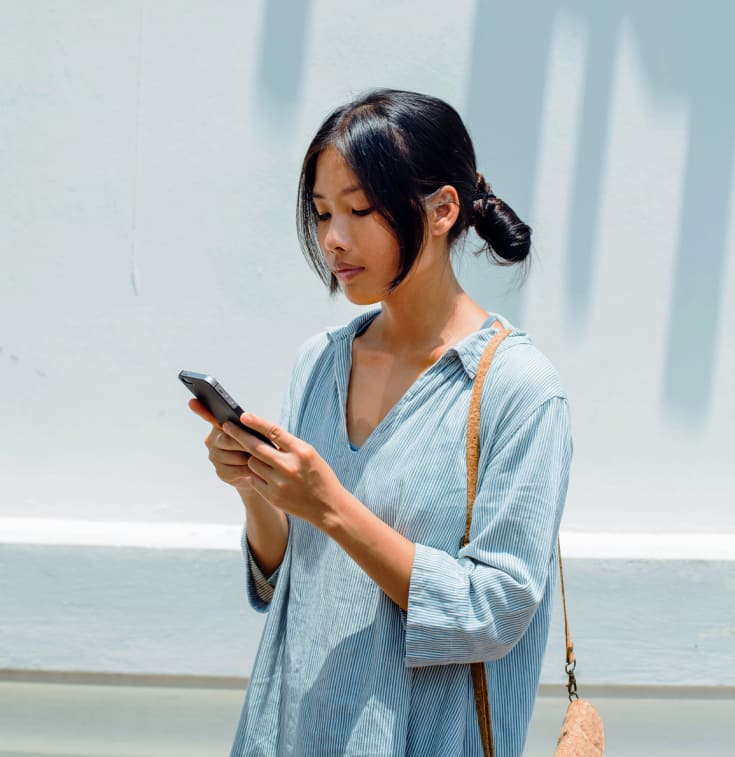|
Are you worried about how much time you’ve been spending on your phone? Chances are, you’re not alone. One 2017 study found that on average, Americans spend five hours per day on their mobile device. The concept of smartphone addiction has been around for a while, and there is now a growing body of evidence that implicates a variety of harmful consequences for young people. Related to this is an uptick in information regarding what happens to us when we cannot use our phone. Nomophobia is a term coined in 2010 by YouGov to refer to the fear of being without your cellphone (the "mo" stands for "mobile"). The idea is gaining more traction as research is being done to investigate the rising levels of anxiety that appear to surface when we don’t have access to our smartphones. Researchers at Iowa State University even published a paper in 2015 dedicated to learning more about nomophobia, including developing a questionnaire to help measure it. Noticing similar trends, some industrialized countries have made strides in attempting to address smartphone addiction. Last year, France passed a law that protects workers from feeling obligated to respond to their devices after work hours, dubbing it the "right to disconnect." While it seems unlikely that similar laws will be coming to the United States anytime soon, there are small but effective things we can do on a regular basis to chip away at our smartphone addiction and decrease our nomophobia. Be present with people.Have you ever noticed that you're out to dinner with not just a group of friends but their cellphones? Probably, since according to a 2015 Pew Research Center study, 89 percent of Americans admitted to using their cellphone during their most recent social activity with others. Avoid leaving your phone out and responding to messages while eating dinner or out socializing with others. Having less digital distraction will likely keep you more engaged and tuned in to your current experience. Create boundaries around social media.The average American spends about two hours per day on social media. This number varies depending on your age, with some studies estimating that teenagers are spending as many as nine hours per day on social media platforms. To cut back, experiment with your scrolling habits. Try reading the news instead of Facebook to stay informed, and talk directly to your friends about their lives rather than waiting for Instagram or Snapchat updates. See if you can limit social media usage to once a day (or less!). You might be surprised at how good it feels to curtail the constant influx of digitally curated information. Give your phone a bedtime.Take a cue from the French and choose a time of night to disconnect from your phone — yes, that includes texts and emails. In addition to putting some distance between you and your phone, this may also have a positive impact on your own bedtime. Multiple research studies have indicated that exposure to blue light given off by cellphones negatively affects melatonin production, which can hinder our ability to fall or stay asleep. Stock up on paper.Once upon a time, we doodled in our notebooks. Now, even Moleskine has transformed to meet the demands of the digital age. Make your grocery or to-do list on a piece of paper (and enjoy that twinge of satisfaction when you cross off an item). Investing in a month-by-month planner to help keep track of commitments and appointments will also lessen dependence on your smartphone calendar. Ditch the digital wake-up.Most people use their phone as their alarm clock. In fact, over 70 percent of Americans report sleeping with their phone next to their bed. Swap your smartphone for an old-fashioned alarm clock to wake up in the morning. This will help you stick to tip No. 3 of giving your phone a bedtime.
0 Comments
Leave a Reply. |
Fohow Cordyceps - Natural Healthcare Products
Quality Certified Products |
Find out our low cost shipping fee: shipping information
(Shipping includes parcel Registration) We are the distributors of The Fohow Corporation. This is not an official page of FOHOW Technology Investment Group Co., Ltd. Official website of the company: FOHOW Technology Investment Group Co., Ltd. |
|
© 2012-2022 NATURAL-HEALTHCARE-PRODUCTS.EU
F.A.Q | SHIPPING & Delivery Terms | PRIVACY-POLICY | CERTIFICATES |





